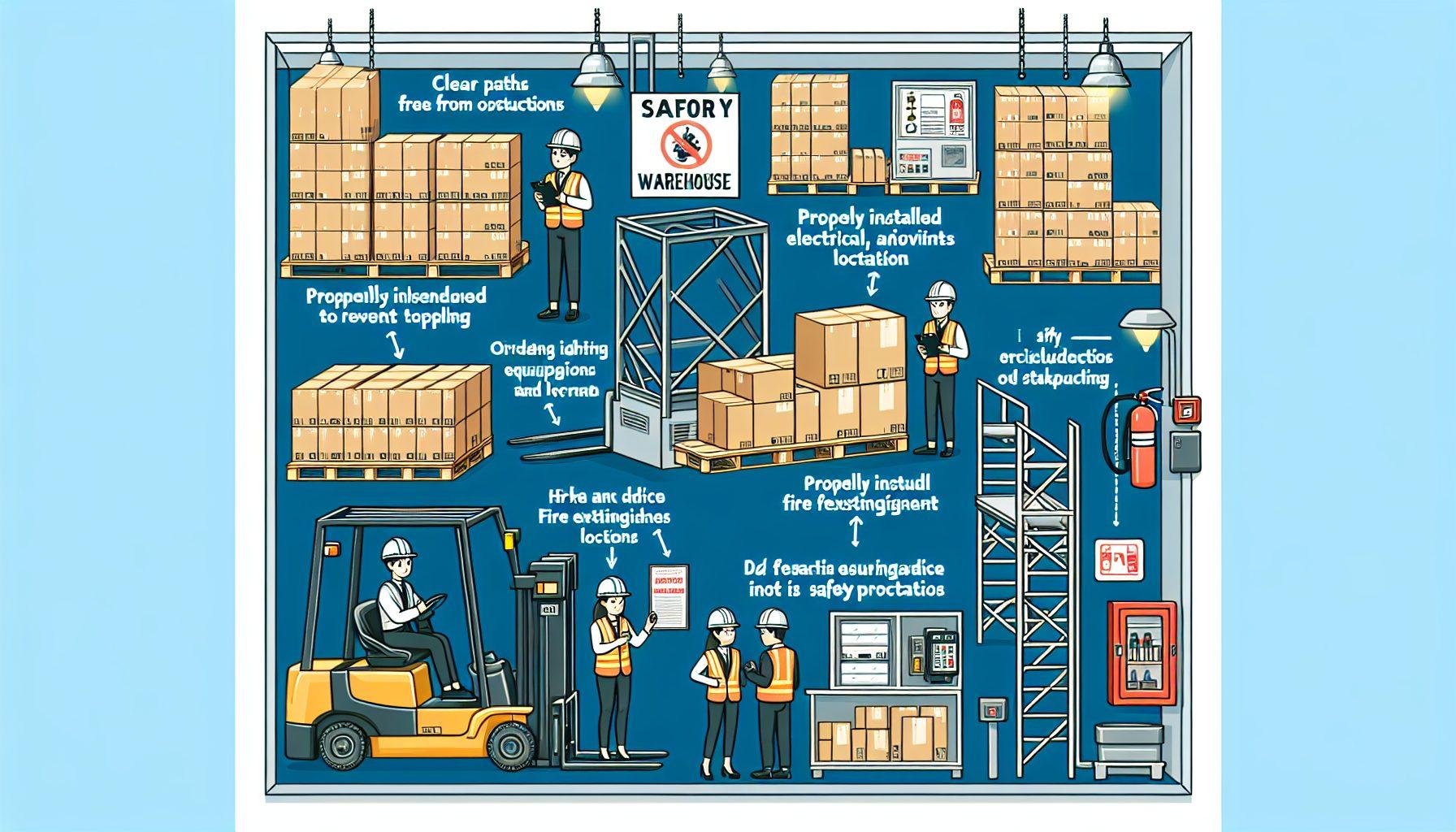In the world of warehousing, safety should always be a top priority. This holds true not only for permanent warehouse setups but also for temporary warehouse setups. Whether you are setting up a temporary warehouse for seasonal inventory or transitional purposes, it is crucial to address safety measures to ensure the well-being of your team and the smooth operation of your warehouse. In this article, we will discuss some important factors to consider when it comes to safety in temporary warehouse setups.
1. Conduct a Warehouse Safety Evaluation
Before you start setting up your temporary warehouse, it is essential to conduct a thorough safety evaluation. This evaluation will help you identify potential hazards and areas that need improvement. Consider bringing in a professional team like HCO Innovations to conduct the evaluation. They can offer expertise in warehouse optimization and safety solutions. By identifying and addressing safety concerns from the beginning, you can create a safer work environment for your team.
2. Implement Clear Signage and Markings
In a temporary warehouse setup, it is essential to have clear signage and markings to guide employees and visitors. Clearly mark aisles, emergency exits, fire extinguishers, and other important areas. Use bold and visible signs to indicate potential hazards or restricted areas. Make sure the signage is easily noticeable even in dimly lit areas. This will help reduce the risk of accidents and ensure everyone is aware of safety protocols.
3. Provide Proper Training and Education
Proper training and education are vital for the safety of warehouse employees. Ensure that all staff members receive comprehensive training on safety protocols, equipment usage, and emergency procedures. Provide regular refresher courses to keep safety knowledge up to date. Consider partnering with HCO Innovations to offer specialized training programs tailored to your temporary warehouse setup. Investing in training will help minimize accidents and create a safety-conscious workforce.
4. Use Appropriate Personal Protective Equipment (PPE)
Personal Protective Equipment (PPE) plays a crucial role in warehouse safety. In temporary warehouse setups, it is important to ensure that all employees have access to and wear the necessary PPE. This may include hard hats, safety goggles, gloves, or high-visibility vests, depending on the nature of the work being performed. Make sure to provide clear guidelines on when and how PPE should be used, and regularly inspect and replace worn or damaged equipment. Safety should always be a priority, and PPE is a key component of ensuring the well-being of your team.
5. Regularly Inspect and Maintain Equipment
Equipment failure can lead to accidents and disruptions in warehouse operations. Regular inspections and maintenance are crucial to keep equipment running safely and efficiently. This is especially important in temporary warehouse setups where equipment may be moved or reused from other locations. Develop a checklist for equipment inspections, and schedule regular maintenance to identify and address any issues promptly. HCO Innovations provides warehouse optimization solutions and can assist you in developing an effective equipment maintenance plan.
6. Promote a Culture of Safety
A strong safety culture is the backbone of a safe warehouse environment. Promote a culture of safety by involving employees in safety committees or regular safety meetings. Encourage open communication about potential hazards or safety concerns and provide a system for reporting incidents or near misses. Recognize and reward employees who demonstrate a commitment to safety. By fostering a culture of safety, you create an environment where everyone takes responsibility for their own well-being and the safety of others.
Conclusion
Creating a safe temporary warehouse setup requires careful planning and attention to detail. By conducting a warehouse safety evaluation, implementing clear signage and markings, providing proper training, ensuring the use of appropriate PPE, regularly inspecting and maintaining equipment, and promoting a culture of safety, you can greatly reduce the risk of accidents and create a safer working environment. If you need assistance in optimizing safety, productivity, and efficiency in your warehouse operations, consider reaching out to HCO Innovations. Their expertise in warehouse optimization solutions can help you create a safe and efficient warehouse setup.

